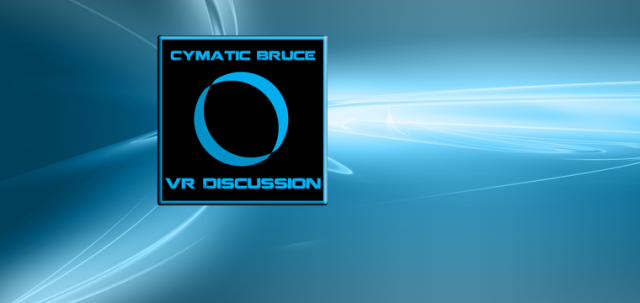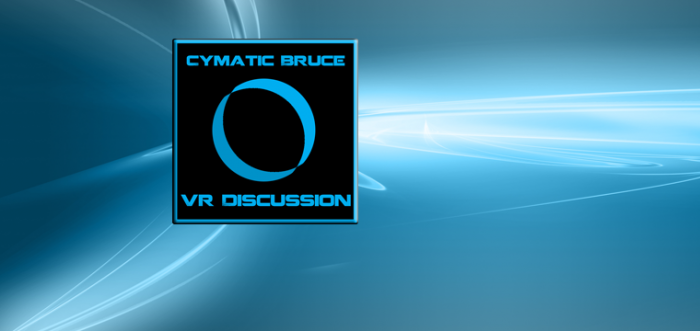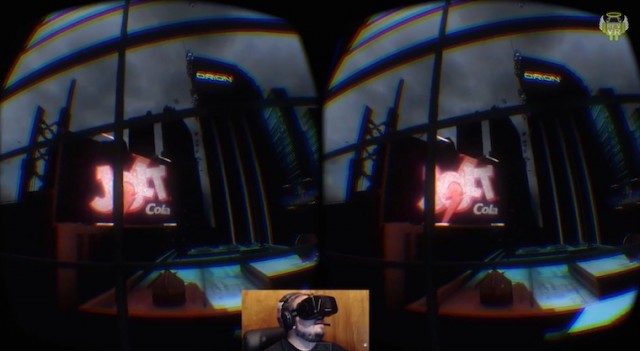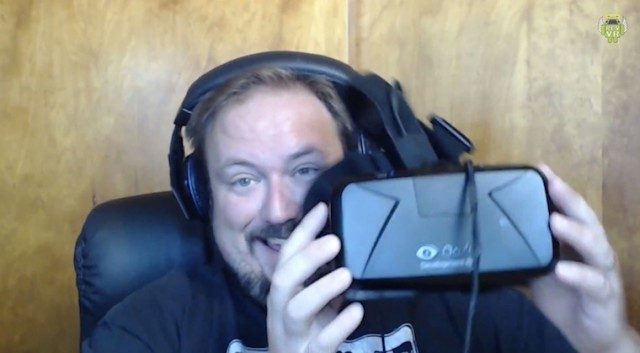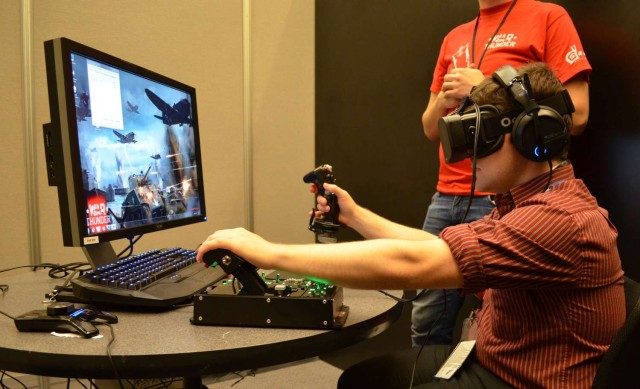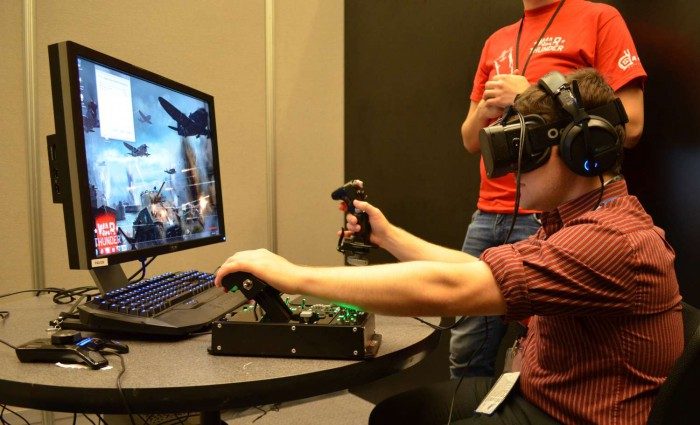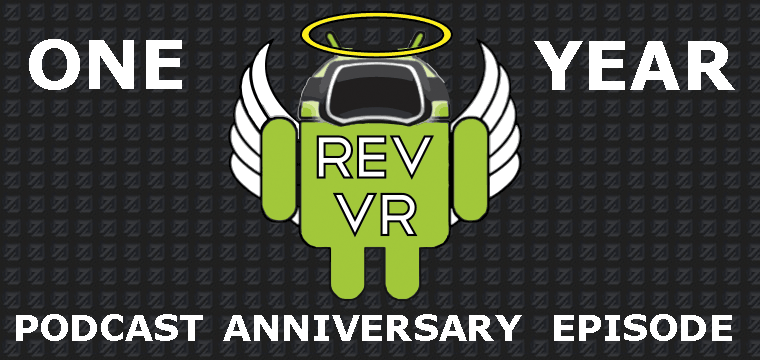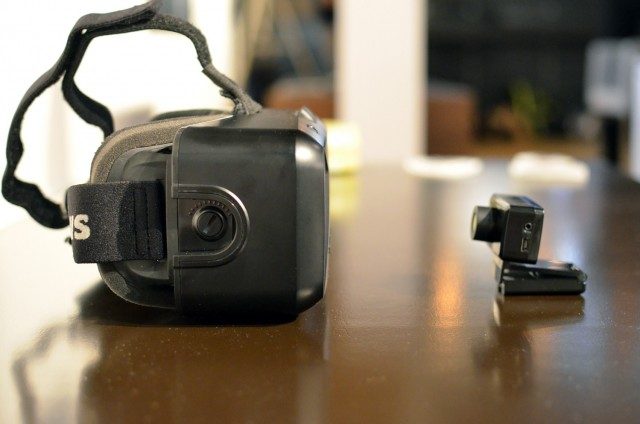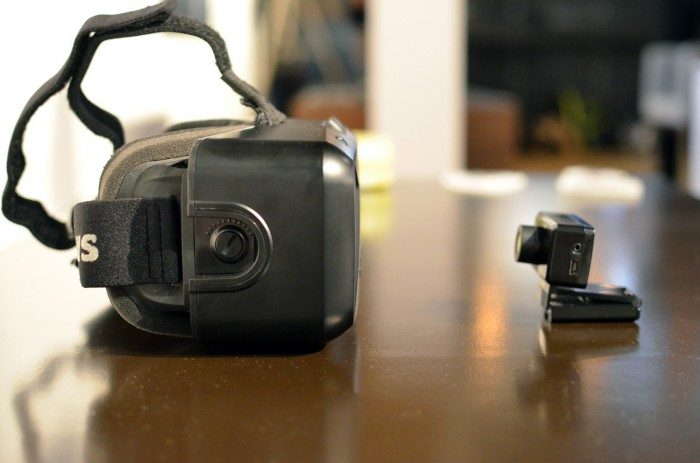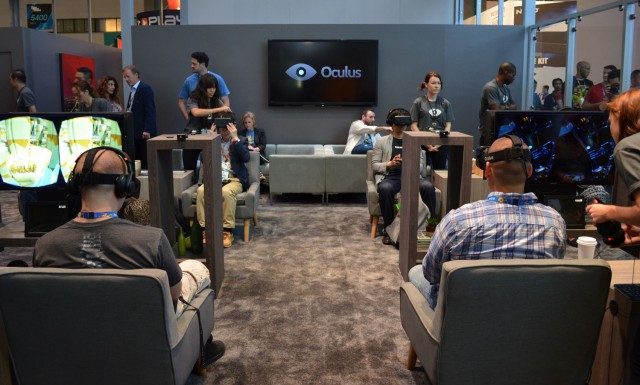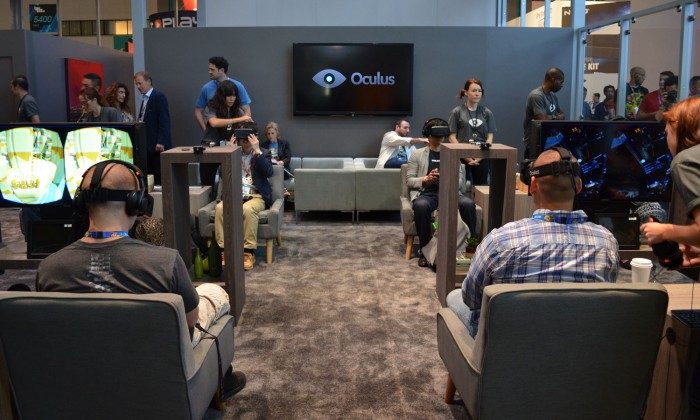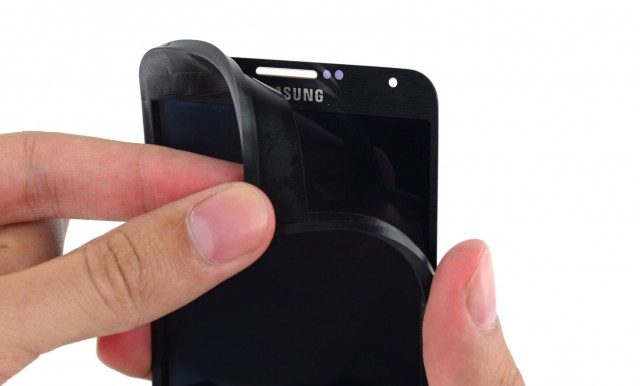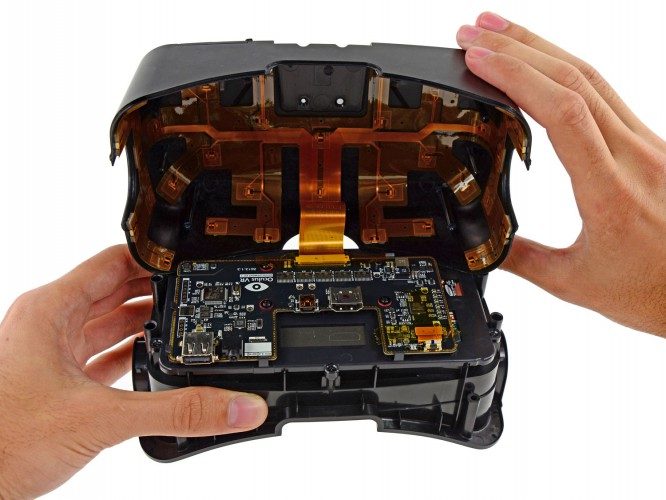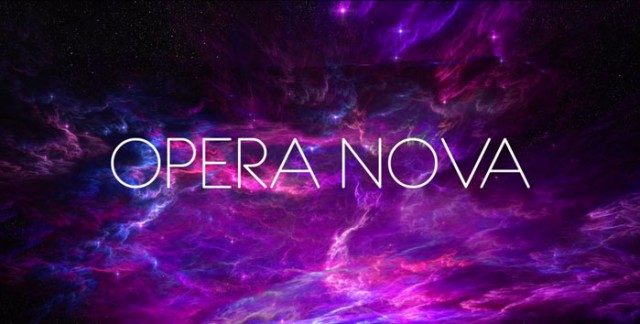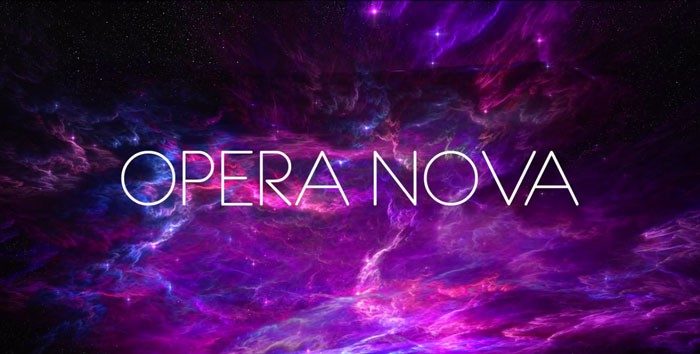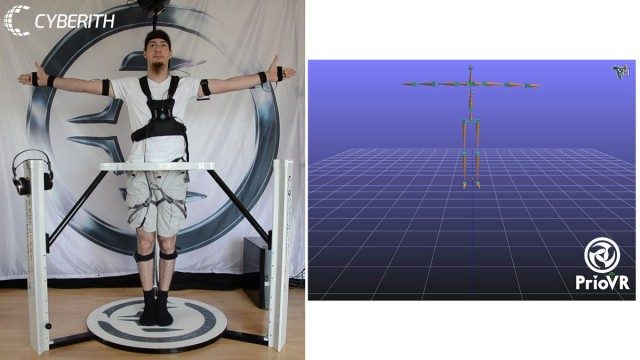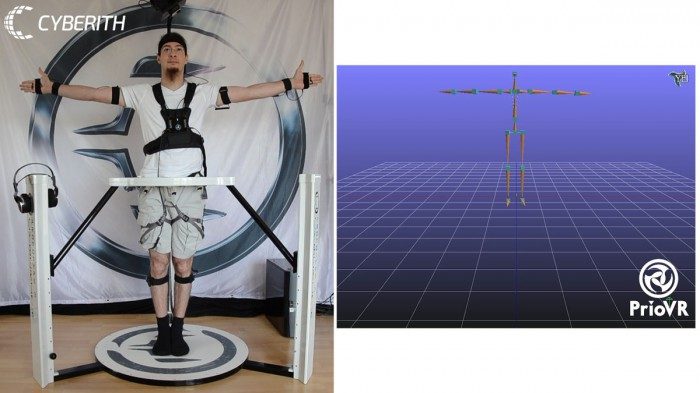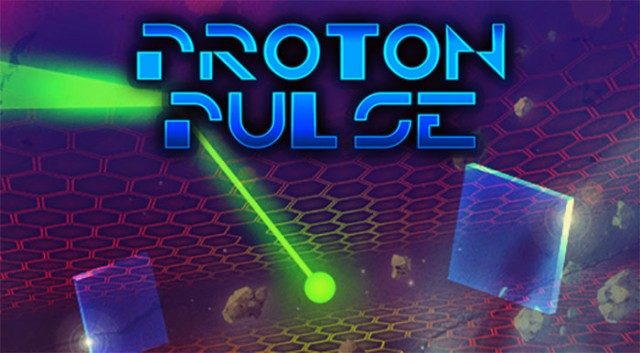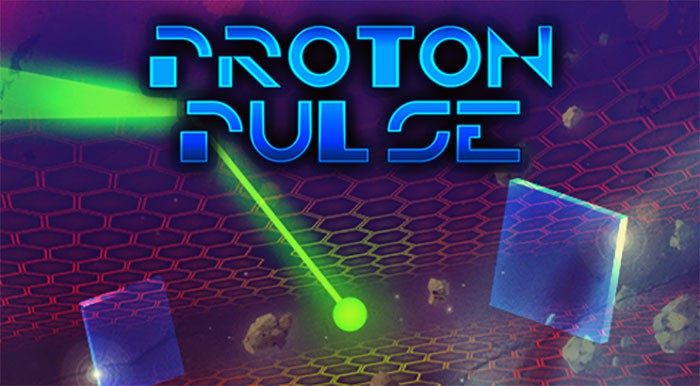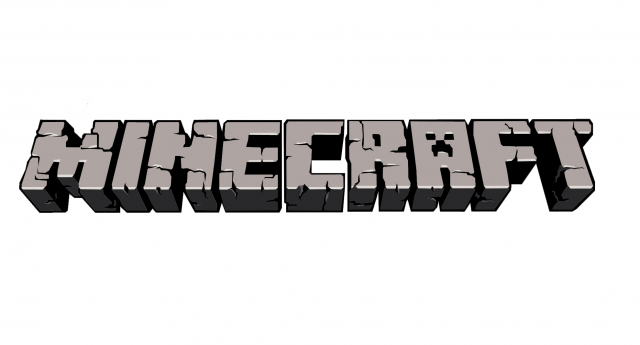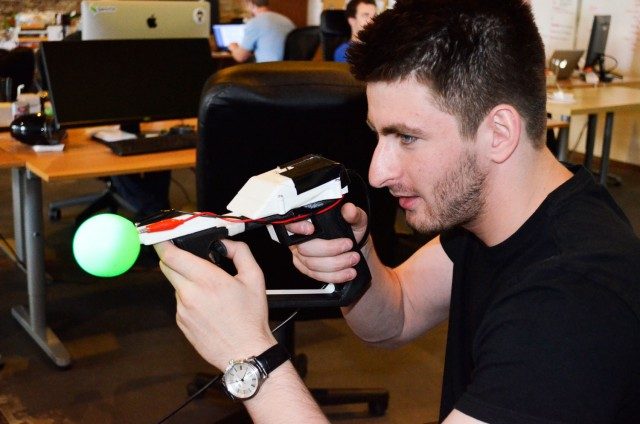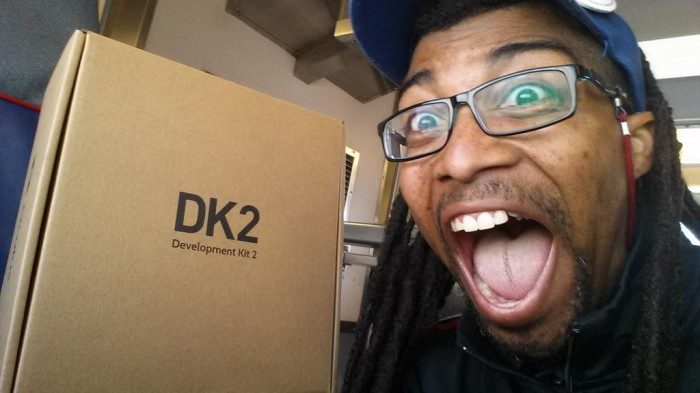So we’re coming up on the close of my first week with the Oculus Rift DK2 and more and more people are receiving their units, hungry for stuff to play on the thing. Early adopters have had to be patient as developers adapt their application to DK2’s launch SDK, version 0.4.0 beta – the component which held back delivery of the DK2 recently.
 Last week we asked you what you’d like to see us try on Oculus’ new VR headset. It’s fair to say that Elite: Dangerous featured pretty heavily in the responses, you can find my video playtest of that here. I also tried to answer as many questions as I could in this in-depth review. But there’s no doubt that Senza Peso featured pretty heavily in the requests we received. With that in mind, we got in touch with Kite & Lightning, Senza Peso’s developers – and they were kind enough to send us a very early version built with DK2 support, including positional tracking.
Last week we asked you what you’d like to see us try on Oculus’ new VR headset. It’s fair to say that Elite: Dangerous featured pretty heavily in the responses, you can find my video playtest of that here. I also tried to answer as many questions as I could in this in-depth review. But there’s no doubt that Senza Peso featured pretty heavily in the requests we received. With that in mind, we got in touch with Kite & Lightning, Senza Peso’s developers – and they were kind enough to send us a very early version built with DK2 support, including positional tracking.
So what’s it like? Check out the video above for my thoughts in motion. In short it’s Senza Peso, but even better. The majority of the enhancements to this on-rails mini-epic are subtle but hugely important 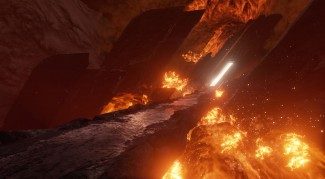 overall. Positional tracking is implemented, so motion cues made by your head are captured and rendered almost completely transparently. And SP’s deft use of particle effects in particular sell the virtual world’s depth to your brain much more effectively. And I can honestly say I’ve never been so distracted by dust motes in my life. But it’s the overall upgrade in experience that makes you feel as if the artistry on show here is being done justice.
overall. Positional tracking is implemented, so motion cues made by your head are captured and rendered almost completely transparently. And SP’s deft use of particle effects in particular sell the virtual world’s depth to your brain much more effectively. And I can honestly say I’ve never been so distracted by dust motes in my life. But it’s the overall upgrade in experience that makes you feel as if the artistry on show here is being done justice.
As of now, DK2 support has not been released officially by Kite & Lightning, but the team say they’re planning a finalised version with DK2 support this month. If you’d like access to the new version, sign up here.
Also check out Ben’s original review of Senza Peso here.

